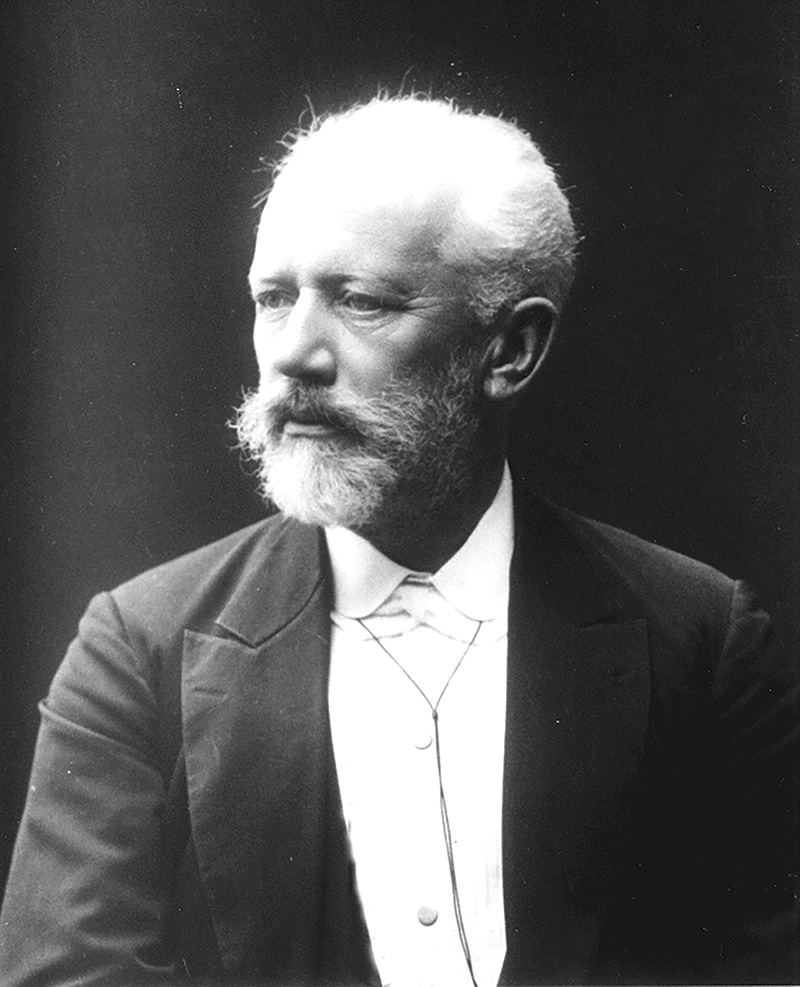Piotr Ilyich Tchaikovsky

- Born: May 7, 1840, Votkinsk, Russia
- Died: November 6, 1893, St. Petersburg
Concerto No. 1 in B-flat Minor for Piano and Orchestra, Op. 23
- Composed: 1874–75; revised in 1889
- Premiere: October 25, 1875 in Boston, Benjamin Johnson Lang conducting a freelance orchestra; Hans von Bülow, piano
- Instrumentation: solo piano, 2 flutes, 2 oboes, 2 clarinets, 2 bassoons, 4 horns, 2 trumpets, 3 trombones, timpani, strings
- Duration: approx. 32 minutes
At the end of 1874, Tchaikovsky began a piano concerto with the hope of having a success great enough to allow him to leave his irksome teaching post at the Moscow Conservatory. By late December, he had largely sketched out the work, and he sought the advice of Nikolai Rubinstein, Director of the Moscow Conservatory and an excellent pianist. Tchaikovsky reported the interview in a letter:
On Christmas Eve 1874, Nikolai asked me to play the Concerto in a classroom of the Conservatory. We agreed to it. I played through the work. There burst forth from Rubinstein’s mouth a mighty torrent of words. It appeared that my Concerto was utterly worthless, absolutely unplayable; the piece as a whole was bad, trivial, vulgar.
Tchaikovsky was furious, and he stormed out of the classroom. He made only one change in the score: he obliterated the name of the original dedicatee—Nikolai Rubinstein—and substituted that of the virtuoso pianist Hans von Bülow, who was performing Tchaikovsky’s piano pieces across Europe. Bülow gladly accepted the dedication and asked to program the premiere on his upcoming American tour. The Concerto created such a sensation when it was first heard, in Boston on October 25, 1875, that Bülow played it on 139 of his 172 concerts that season. (Remarkably, Tchaikovsky’s Second Piano Concerto was also premiered in this country, by Madeleine Schiller and the New York Philharmonic Society conducted by Theodore Thomas on November 12, 1881.)
Tchaikovsky’s First Piano Concerto opens with the familiar theme of the introduction, a sweeping melody nobly sung by violins and cellos above thunderous chords from the piano. Following a decrescendo and a pause, the piano presents the snapping main theme. (Tchaikovsky said that this curious melody was inspired by a tune he heard sung by a blind beggar at a street fair.) The clarinet announces the lyrical, bittersweet second theme. The simplicity of the second movement’s three-part structure (A–B–A) is augured by the purity of its opening—a languid melody in the solo flute. The center of the movement is of very different character, with a quick tempo and a swift, balletic melody. The languid theme and moonlit mood of the first section return to round out the movement. The crisp rhythmic motive presented immediately at the beginning of the finale and then spun into a complete theme by the soloist dominates much of the movement. In the theme’s vigorous full-orchestra guise, it has much of the spirit of a robust Cossack dance. To balance the vigor of this music, Tchaikovsky introduced a romantic melody first entrusted to the violins. The dancing Cossacks repeatedly advance upon this bit of tenderness, which shows a hardy determination. The two themes contend, but the flying Cossacks have the last word.
—Dr. Richard E. Rodda